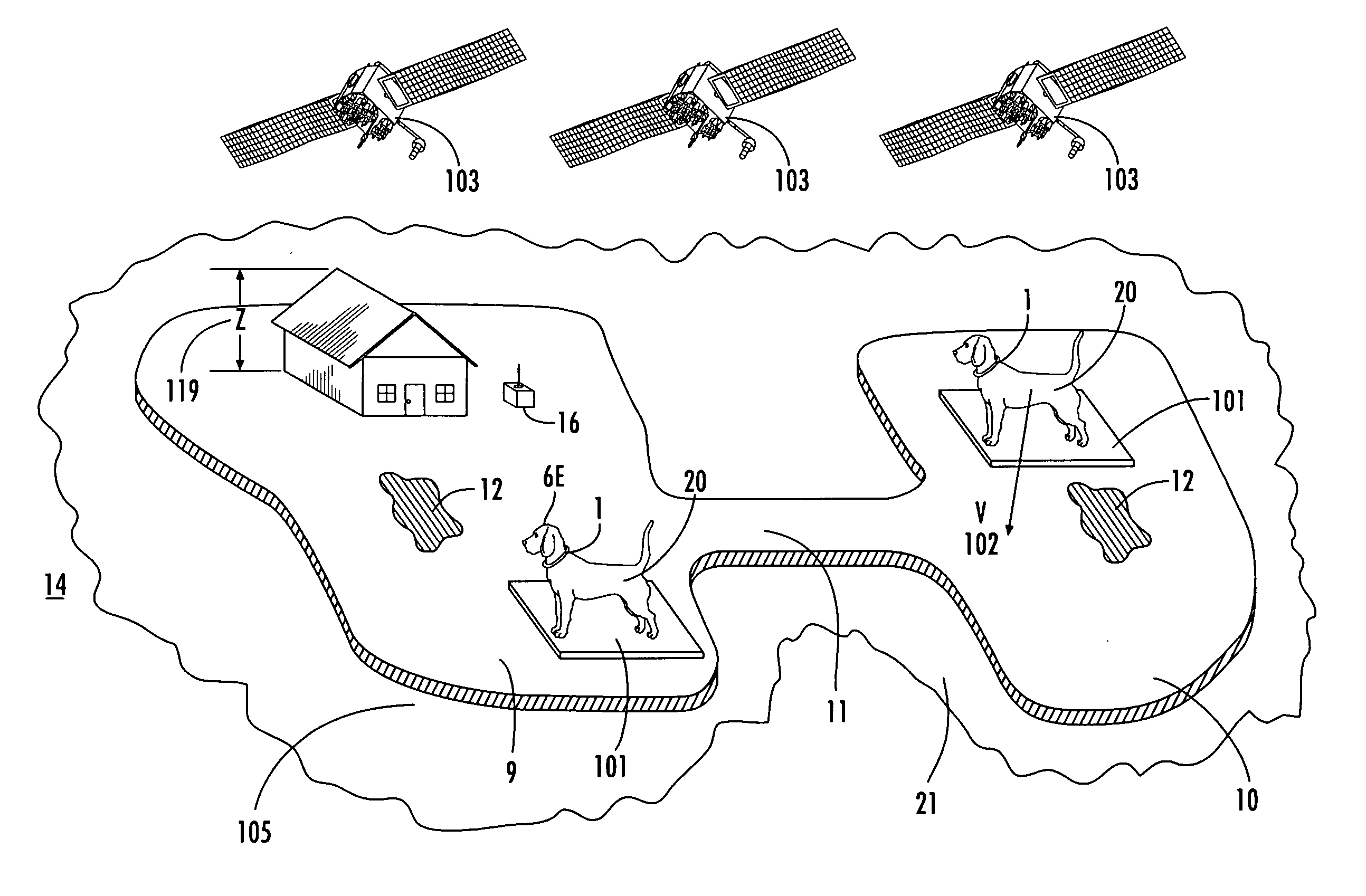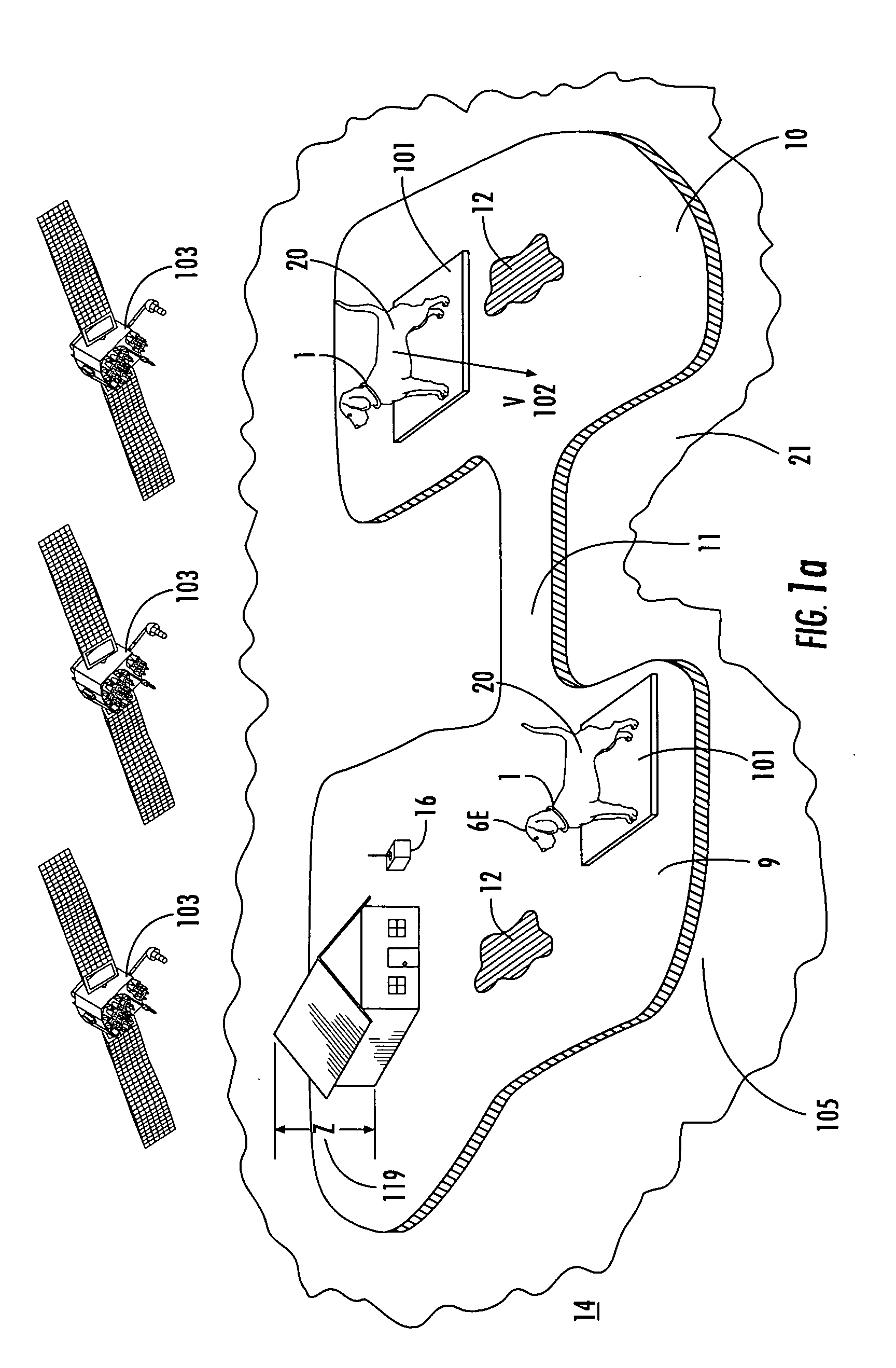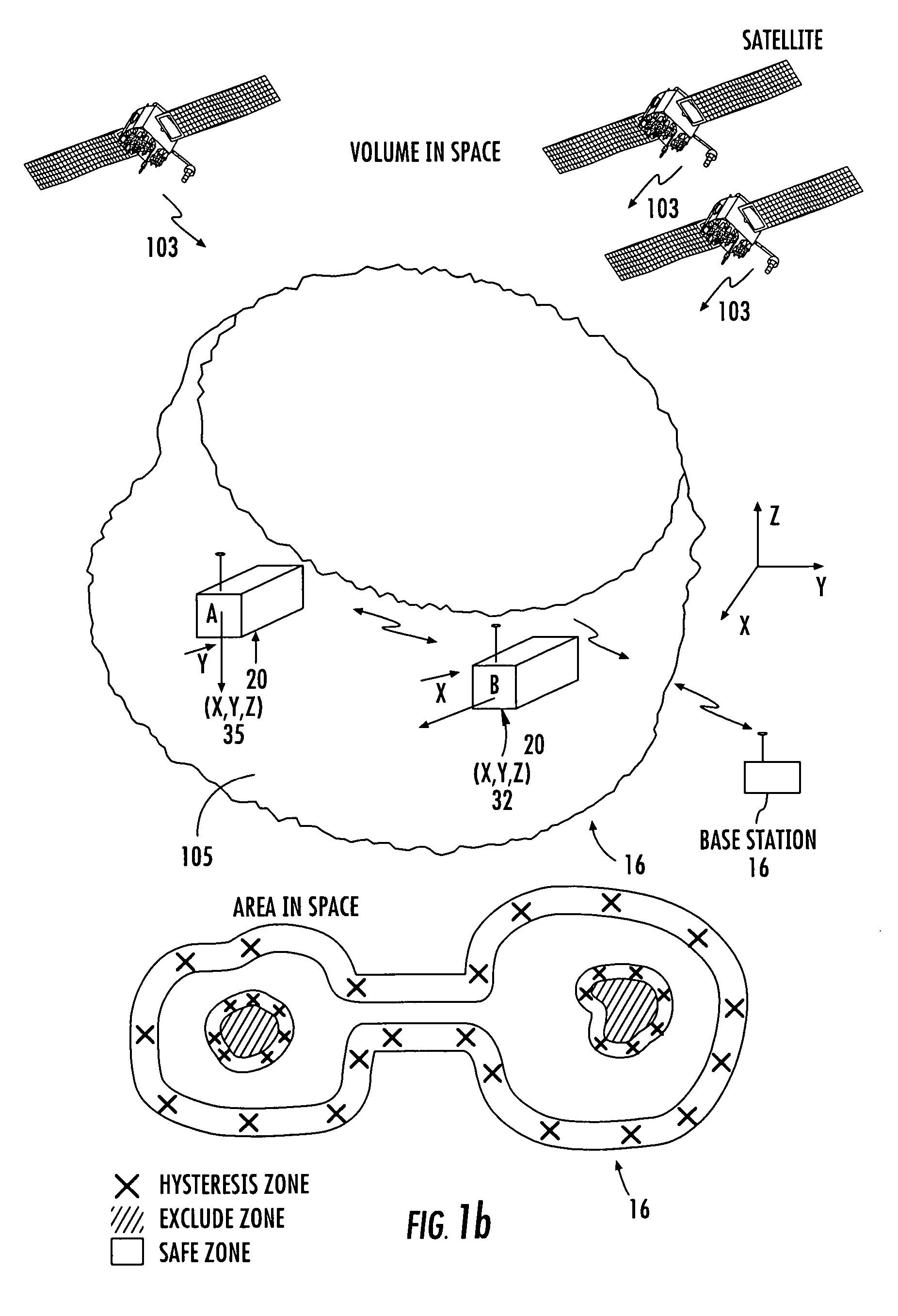Large area position/proximity correction device with alarms using (D)GPS technology
a technology of large-area position/proximity correction and alarm, which is applied in the direction of electric signalling details, navigation instruments, instruments, etc., can solve the problems of limited spacial resolution for precise boundary discrimination, the expense of these systems, and the work involved in burying the wire loop
- Summary
- Abstract
- Description
- Claims
- Application Information
AI Technical Summary
Benefits of technology
Problems solved by technology
Method used
Image
Examples
examples
[0061] % Cn—Enable / Disable Data Compression
[0062] % En—Auto-Retrain control
[0063]&Cn—DCD Control
[0064]&Dn—DTR Option
[0065]&Fn—Recall Factory Profile
[0066] Referring to FIG. 5, a perspective view of a base / mobile station 16 is illustrated. Base / mobile station 16 contains a readout screen 19, a communications antenna 17 and all the necessary hardware to communicate with collar 1 (not shown). Readout screen 19 can be an LCD in order to read and map the coordinates when the collar is polled and for any diagnostics needed on the base station. Station 16 can be a stand-alone unit or a wireless phone with location capabilities and of the new 3-G design. The capability to reprogram individual collars in the field and manage a heard is built into the station. However, each collar can communicate with other collars eliminating the need for exterior management. In one embodiment, the base station can be used as a differential station whereby it would include a GPS module 106 (not shown). ...
PUM
 Login to View More
Login to View More Abstract
Description
Claims
Application Information
 Login to View More
Login to View More - R&D
- Intellectual Property
- Life Sciences
- Materials
- Tech Scout
- Unparalleled Data Quality
- Higher Quality Content
- 60% Fewer Hallucinations
Browse by: Latest US Patents, China's latest patents, Technical Efficacy Thesaurus, Application Domain, Technology Topic, Popular Technical Reports.
© 2025 PatSnap. All rights reserved.Legal|Privacy policy|Modern Slavery Act Transparency Statement|Sitemap|About US| Contact US: help@patsnap.com



